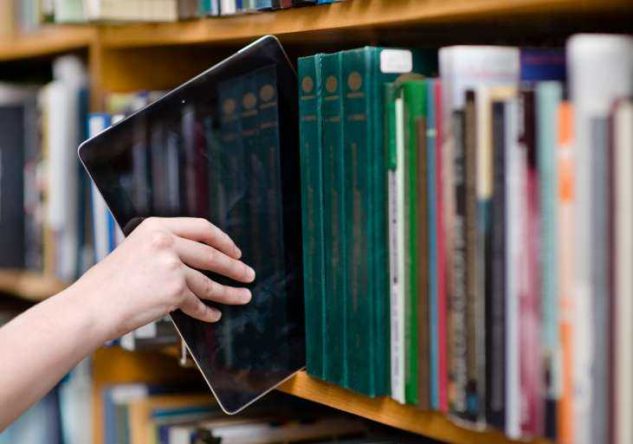Bring Your Own Technology (BYOT) is critical in the digital evolution of schools, when normalising whole school use of the digital, and when shaping digitally-based school ecosystems.
Ideally, young people should be trusted in the classroom to use the digital technologies they are already using in the ‘real world' to enhance their learning.
While the young, parents and, invariably teachers have normalised the use of the digital outside the school walls and have expectations of the digital, few schools globally have normalised its use and are yet to reap the myriad opportunities and benefits.
The reason is simple: it is very hard to do so.
It requires each school to move from the paper-based operational mode and mindset, to a mode that is digitally-based, where the school culture actively supports change, risk-taking and ongoing organisational evolution and transformation.
Still, the move to BYOT is fundamental to creating an ecosystem that allows that to happen. It is a reality that, at this stage, few appreciate.
The majority of school leaders, technology coordinators, educational administrators and, indeed, academics initially view BYOT as simply a technological development, with many thinking ‘Let's ask the kids to buy the technology the government is no longer funding'. The operation can be readily delegated to the technology team, obviating the principal's need to address the development.
Those leaders are approaching BYOT with a traditional, insular, paper-based mindset – what Bhaduri and Fischer (2015) refer to as an ‘analogue mindset'. This views the school as a largely segmented organisation, where each unit has its responsibilities, enabling the principal to have but a cursory understanding of all developments.
As the school evolves and makes more use of the digital, that perspective changes (Lee & Broadie, 2015). Those leaders recognise the transformative impact of the digital on every facet of the school's operations, adopt what Bhaduri and Fischer (2015) refer to in Are you an analogue or digital leader? as a digital mindset, and better appreciate the imperative of addressing the use of the digital from a whole-school perspective.
They come to appreciate the importance of the school having a digital vision, and understand the part digital technology plays in shaping the desired tightly integrated, higher order school ecosystem.
They, like the global pathfinders, come to understand that digital technology in its many forms will underpin virtually every aspect of the school's operations, and will be the base upon which to continually grow the school, its teaching, learning and productivity.
BYOT puts into the hands of all within the school community requisite, current, powerful and convergent personal technologies. And, it gives teachers and children the license to build upon that technology astutely.
Schools invariably will make the initial shift to BYOT with a relatively immature digital ecosystem, with many still using traditional paper-based practices. In orchestrating total student use of their own technologies and ensuring all within the school community have a sophisticated digital toolkit, the school positions itself to create a more mature, integrated and productive school ecosystem - an ecosystem which will continually enhance the school's educational capability.
BYOT vs BYOD
It is important to understand what is meant by BYOT – what it is not, and where it differs from Bring Your Own Device (BYOD).
While BYOD invariably sees the school telling the parents what device and software they must buy, Lee and Levins (2012) say:
‘Bring your own technology (BYOT) is an educational development and a supplementary school technology resourcing model where the home and the school collaborates in arranging for the young's [24 hours/7 days a week] ... own digital technology/ies to be extended into the classroom to assist their teaching and learning and the organisation of their schooling, and where relevant, the complementary education outside the classroom.'
Underpinning that definition is:
- trust in, and respect for each child;
- recognition of each child's ownership, responsibility, and out of school use of their digital technologies, and the impact it has on their learning;
- the importance of genuine ongoing collaboration between the school and the student's homes;
- the school's willingness to distribute the control of teaching and learning, and to pool the resources of the school and its homes; and
- the understanding that, from here on, the home, not the school, will select and provide the personal digital technologies used by the children in the classroom.
School readiness
In 2012 both Lee and Levins, and Canada's Alberta Ministry of Education affirmed that schools have to be culturally and technologically ready to move to BYOT, and be willing to embrace its underlying educational principles.
Three years on, in researching the revised forthcoming edition of Bring Your Own Technology, that imperative became evermore apparent to myself and Martin Levins.
Until the majority of the school's teachers are using the digital in their everyday teaching, are of a mind where they genuinely collaborate with the student's homes in the use of the digital, and have a school principal with the means and vision to create the desired digital school, schools have little chance of successfully introducing BYOT and using it to create a higher order ecosystem.
Educational benefits
In identifying the benefits for the revised version of Bring Your Own Technology, Levins and I required almost 9,000 words to address the benefits of which we are now aware.
Suffice it to say that the vast majority flowed from the tightly integrated, higher order digital school ecosystem. Few were related to simply having the technology.
The benefits of the creation of a continually evolving digital ecology are not to be ignored. You will have a culture, a mode of 24/7 schooling that the young and staff find energising and attractive, where they are trusted, empowered and supported to take risks in capitalising on the opportunities opened by the digital.
All these benefits are impossible to utilise without all having the digital in your own two hands.
Critically, as will be discussed in the final article in this series, it is the tightly integrated, increasingly focused school ecosystem that simultaneously addresses all the variables that impact each child's learning, where the greatest educational enhancement stands to be made.
BYOT is the development that provides schools with the facility to create and continually enhance that ecosystem.
References
Bhaduri, A., Fischer, B. (2015). Are You an Analogue or Digital Leader? Forbes. Retrieved 19 February 2015 from http://www.forbes.com/sites/billfischer/2015/03/19/are-you-an-analog-or-digital-leader
Crown in the Right of the Province of Alberta (2012). Bring Your Own Device: A Guide for Schools. Alberta: Alberta Education. Retrieved from http://education.alberta.ca/media/6749210/byod%20guide%20revised%202012-09-05.pdf
Lee, M., Broadie, R. (2015). A Taxonomy of School Evolutionary Stages. Broulee Australia. Retrieved from http://www.schoolevolutionarystages.net
Lee, M., Levins, M. (2012). Bring Your Own Technology: The BYOT guide for schools and families. Melbourne, Camberwell: ACER Press.



